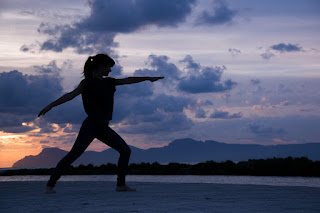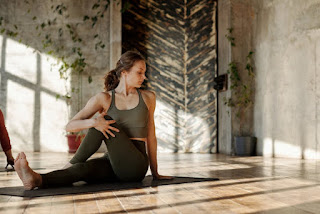Yoga for Anxiety Relief: A Calming Sequence
In today’s fast-paced world, anxiety has become an increasingly common challenge, affecting individuals across all walks of life. Amidst the myriad of remedies and therapies available, yoga stands out as a holistic and accessible approach to mitigating anxiety. This ancient practice, rooted in the integration of mind, body, and spirit, offers not just physical benefits but profound mental and emotional relief as well. Yoga is recognized as a form of alternative medicine that provides holistic benefits for managing anxiety and stress, emphasizing its effectiveness in improving mood, coping ability, and stress management.
Yoga, in conjunction with mindfulness, has been shown to significantly reduce stress levels, improve concentration, and foster an overall sense of well-being. Through a combination of physical postures (asanas), controlled breathing techniques (pranayama), and meditation (dhyana), yoga provides a comprehensive toolkit for combating anxiety.
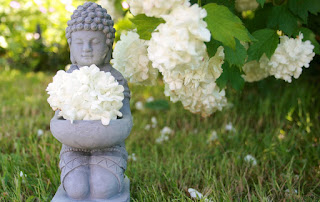
This article aims to explore a calming yoga sequence specifically tailored for anxiety relief. Alongside, we’ll delve into how mindfulness can enhance the benefits of yoga, creating a powerful synergy that promotes relaxation and mental clarity. Whether you are a beginner or an experienced practitioner, these insights will equip you with effective strategies to integrate yoga and mindfulness into your routine for lasting mental wellness.
Understanding the Connection Between Mindfulness and Yoga
Yoga and mindfulness, when practiced together, offer a potent remedy for the stresses and strains of modern life, particularly for those dealing with anxiety. This section elucidates the symbiotic relationship between the two practices, highlighting how they can be integrated to foster mental, emotional, and physical well-being. Yoga, alongside mindfulness, stands out among complementary therapies for anxiety relief, with studies showing its effectiveness in reducing depression and anxiety compared to other methods like massage therapy, progressive muscle relaxation, and stress management.
The Role of Mindfulness in Yoga
Mindfulness, the practice of being fully present and engaged in the moment, is a core component of yoga. It transforms the physical practice of yoga poses (asanas) into a meditative, introspective experience. By focusing on the breath and observing bodily sensations and thoughts without judgment, individuals can cultivate a state of mental clarity and calmness. This mindfulness aspect of yoga is especially beneficial for anxiety relief, as it encourages a shift from a state of reactivity to one of mindful response.
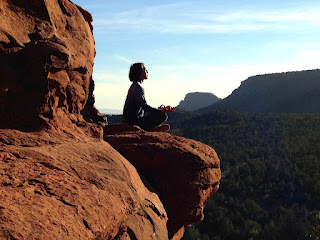
The Role of Mindfulness in Yoga
Mindfulness, the practice of being fully present and engaged in the moment, is a core component of yoga. It transforms the physical practice of yoga poses (asanas) into a meditative, introspective experience. By focusing on the breath and observing bodily sensations and thoughts without judgment, individuals can cultivate a state of mental clarity and calmness. This mindfulness aspect of yoga is especially beneficial for anxiety relief, as it encourages a shift from a state of reactivity to one of mindful response. Incorporating relaxation techniques, including controlled breathing and meditation, into yoga practice enhances its effectiveness in managing stress and anxiety, making it a comprehensive approach to mental well-being.
Physiological Benefits
The combination of yoga and mindfulness offers significant health benefits and positively impacts the body’s health status by affecting the body’s stress response system. Controlled breathing (pranayama) and gentle physical exercises (asanas) help lower cortisol levels, reduce blood pressure, and decrease the heart rate, countering the body’s fight-or-flight response to stress. This physiological shift promotes relaxation and reduces symptoms of anxiety, highlighting the broad health benefits of yoga, including its well-tolerated and easily accessible nature, and underscoring the importance of future research to understand who is most likely to benefit from yoga for generalized anxiety disorder.
Enhancing Mental Health
Regular yoga practice, imbued with mindfulness, has been shown to improve mental health outcomes significantly. It aids in reducing symptoms of anxiety and depression by enhancing neural connections and promoting a sense of peace and well-being. Specifically, yoga has been effective in managing anxiety disorder, offering a therapeutic approach that complements traditional treatments. Studies have also demonstrated that yoga can significantly improve depression scores, especially among caregivers of inpatients with neurological disorders, highlighting its potential in addressing various mental health issues. The meditative aspects of yoga encourage practitioners to stay present, helping to alleviate worries about the future or ruminations on the past, which are common triggers for anxiety.
Building Resilience
Yoga and mindfulness are key components of stress management, building emotional resilience and equipping individuals with the tools to manage stress and anxiety more effectively. This resilience is cultivated through consistent practice, which enhances self-awareness and emotional regulation, crucial for effective stress management and coping with anxiety.
In summary, the integration of mindfulness into yoga practice provides a holistic approach to stress management and managing anxiety, offering benefits that extend beyond the yoga mat. It is a journey of self-discovery, where each pose and each breath brings you closer to a state of balance and inner peace.
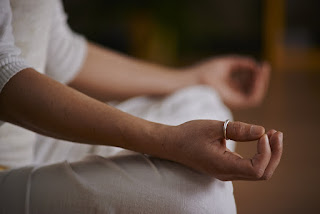
A Flowing Yoga Sequence for Anxiety Relief
A Flowing Yoga Therapy Sequence for Anxiety Relief
This yoga sequence is designed to guide you through a series of poses that flow into one another, creating a harmonious and calming practice. Ideal for relieving anxiety, this sequence encourages a gentle yet profound connection between movement and breath, enhancing relaxation and mental clarity. Studies have shown significant benefits in anxiety and stress reduction among participants in a yoga group, reinforcing the effectiveness of this sequence.
Begin with Balasana (Child’s Pose)
Start your practice by grounding yourself in Child’s Pose. Allow your forehead to rest softly on the mat, arms extended forward. Take deep, nourishing breaths, setting the intention for a calming practice.
Transition to Setu Bandhasana (Bridge Pose)
From Child’s Pose, gently move onto your back, preparing for Bridge Pose. Lift your hips towards the sky, opening your heart and chest. Feel the release in your spine and the invigoration of your circulation.
Flow into Uttanasana (Standing Forward Bend)
Roll up to a standing position and dive into a Standing Forward Bend. Let your head hang freely, inviting a sense of release in both your mind and body. Allow each exhale to deepen the fold, encouraging a gentle stretch along the back of your legs.
Shift to Viparita Karani (Legs-Up-The-Wall Pose)
Transition from the forward bend to Legs-Up-The-Wall Pose. This restorative pose invites you to invert gently, calming the nervous system. As your legs rest against the wall, feel the soothing effect on your mind, easing any lingering stress or anxiety.
Conclude with Savasana (Corpse Pose)
Finally, lie down in Corpse Pose, surrendering to total relaxation. With each breath, release any remaining tension, allowing your body to feel heavy and supported by the earth. Rest here, absorbing the benefits of your practice, and emerge feeling refreshed and centered.
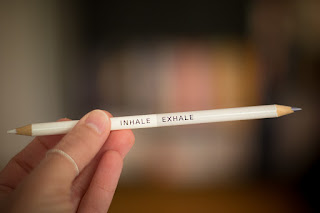
Breathing Techniques for Enhanced Relaxation
Integrating specific breathing techniques into your yoga practice can deepen the sense of relaxation and significantly enhance the calming effects on the mind. Here, we focus on two complementary practices that synergize beautifully with the yoga sequence for anxiety relief, fostering a deeper connection to the breath and present moment. Additionally, incorporating Sudarshan Kriya Yogic breathing into your routine can further enhance relaxation and reduce anxiety, serving as a powerful complement to these techniques.
Nadi Shodhana (Alternate Nostril Breathing)
After completing your yoga sequence, find a comfortable seated position to begin Nadi Shodhana. This technique balances the left and right hemispheres of the brain, inducing a state of harmony and peace. Gently alternating the breath between nostrils clears the mind, eases stress, and prepares you for deeper relaxation or meditation.
Bhramari (Bee Breathing)
Conclude your practice with Bhramari, known for its immediate soothing effect on the nervous system. The gentle humming sound produced during exhalation creates a meditative resonance within, promoting mental clarity and tranquility. It’s an excellent precursor to final relaxation, allowing for a seamless transition into a restful state.
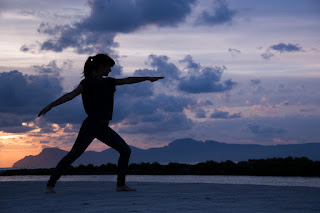
Incorporating Yoga and Mindfulness into Your Daily Routine for Long-term Benefits
Incorporating yoga and mindfulness into your daily routine can be a powerful way to manage and treat anxiety, transforming your approach to stress and fostering a sense of inner peace that permeates all aspects of life. Here are some strategies to seamlessly incorporate these practices into your daily activities, ensuring lasting benefits.
Consistency is key. Try to dedicate a specific time each day for your yoga practice, even if it’s just a few minutes. Morning practices can energize and set a positive tone for the day, while evening practices can help unwind and process the day’s events.
Beyond the yoga mat, integrate mindfulness into everyday activities. Practice being fully present and engaged, whether you’re eating, walking, or simply breathing. This can transform mundane tasks into moments of mindfulness, reducing stress and enhancing appreciation for the present moment.
Leverage available resources to enrich your practice. Books, online classes, and apps can provide guidance, inspiration, and variety, keeping your practice fresh and engaging.
By embracing a routine that incorporates specific yoga poses, mindful breathing techniques, and a consistent mindfulness practice, individuals can cultivate a sense of calm, resilience, and balance. This article has a roadmap for beginners and seasoned practitioners alike to harness the calming powers of yoga and mindfulness, fostering a holistic approach to mental wellness. As we navigate the complexities of modern life, let the principles of yoga and mindfulness serve as anchors, grounding us in the present and guiding us toward inner peace.



